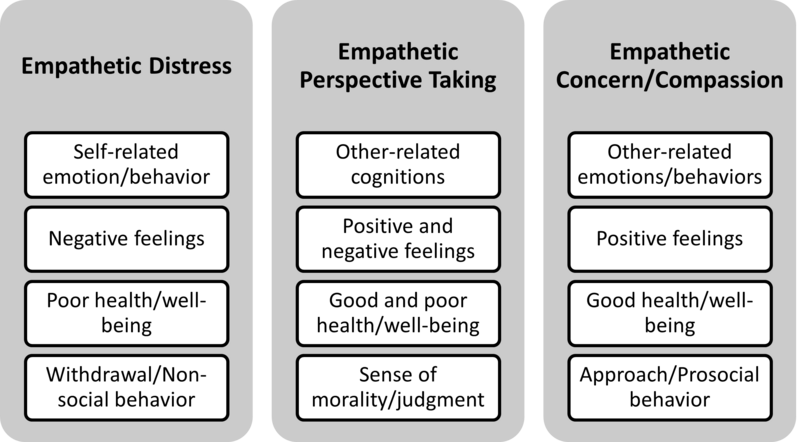ATD Blog
A Business Case for Building Empathy, Trust, and Psychological Safety in Teams and Organizations
Wed Apr 24 2024

There is increasing evidence that toxic interpersonal leadership practices and behavior cause serious problems for employees, organizations, and society. Many studies support a link between empathy in leaders and employee performance as well as positive emotional, behavioral, and health outcomes.
The 2021 EY Empathy in Business Survey measured how empathy affects leaders, employees, and innovation in the workplace. Of the 1,000 US workers who participated in the survey, 88 percent agreed that empathy contributes to more effective leadership, and 85 percent believed that empathetic leadership directly increases performance and productivity in employees.
The Center for Creative Leadership (CCL) analyzed data from 6,731 mid- to upper-middle-level managers in 38 countries to explore how empathy influences a manager’s job performance. They found that empathy is indeed associated with job performance, though it has some cultural variations (that is, it’s more important in some cultures than others).
Research from Georgetown University Professor Christine Porath has suggested that 98 percent of employees have experienced rudeness from others on the job. She has found that a culture lacking empathy and compassion results in 30 percent less creativity, a decrease in team morale and performance (38 percent intentionally reduce work effort in this type of culture), and dissatisfied customers. So, although it’s a “soft skill,” selecting for and enhancing empathy in leaders appears to have some real bottom-line performance and well-being outcomes in employees.
Our own research has shown a significant association between leaders who express caring, support, and empathy toward their colleagues and organizational outcomes. In a nationally representative sample of 1,095 working adults in the US, we compared business-relevant outcomes for companies that scored in the highest quartile versus the lowest quartile on organizational trust and leadership empathy. Those working at companies in the highest quartile reported 75 percent higher engagement, 50 percent better retention, and 40 percent less job burnout.
Finally, the impact of empathetic and compassionate cultures extends to more than just “helping” industries. Sigal Barsade and colleagues at the Wharton School at the University of Pennsylvania surveyed more than 3,200 employees in 17 organizations spanning seven industries: biopharmaceutical, engineering, financial services, higher education, public utilities, real estate, and travel. She found that in organizations where employees felt and expressed compassion toward one another, employees also experienced greater job satisfaction and commitment to and accountability for work performance.
What Exactly Is Empathy?
Empathy has three interrelated dimensions, each with some unique and overlapping neurobiological connections. These include:
Empathic distress/unconscious bias
Perspective-taking/theory of mind (that is, the process of inferring the mental state of others)
Empathic concern/compassion
Empathetic distress and perspective-taking are largely cognitive processes, whereas empathetic concern/compassion leads to observable behaviors such as volunteering, caring, and directly supporting others. In fact, empathetic concern/compassion as a type of empathy is largely mediated by the prosocial peptide oxytocin. When we experience others as friends, rather than as threats or foes, we release more oxytocin, signaling to the brain that we can safely interact, approach, and connect with others.
The results of functional neuroimaging studies demonstrate that when individuals perceive others to be in pain or distressful situations, similar neural mechanisms activate as when they are in painful situations themselves. However, the different types of empathy have somewhat distinct neurobiological pathways and associated emotions and behaviors, as shown in Figure 1.
FIGURE 1: Dimensions of empathy

Developing (the Right Kind of) Empathy
Because of the link between empathy and organizational outcomes, the key actionable issue is whether improved empathy can be learned through coaching, training, or the establishment of explicit group norms. Accumulating evidence shows that individuals and teams can get better at empathy using specific techniques and interventions. These include:
1. Enhance an empathy mindset. Karina Schumann, an assistant professor in psychology at the University of Pittsburg, and her colleagues Jamil Zaki and Carol Dweck found that people’s mindsets powerfully affect whether they exert the effort to empathize. In seven studies, they observed that people who believed that empathy can be developed actually expended greater empathic effort in interacting with others than did people who believed empathy could not be changed. Thus, training and coaching should attempt to shift an individual’s empathy mindset toward developing empathic skills, and this may lead to greater cooperation, support, and compassion toward others.
2. Practice empathy-based perspective-taking. Facilitating the ability to adopt the perspective of another person is an important component of developing empathetic concern. Research using fMRI by Daniel Ames of Columbia University and colleagues has shown that exercises focusing on perspective-taking appear to blur the distinction between self and others, enhancing empathetic concern and possibly even reducing unconscious bias and overt prejudice.
3. Practice (compassion-based) mindfulness meditation. A second approach to enhancing compassion and empathy uses mindfulness meditation. Recent research has shown that not all forms of mindfulness meditation activate the same neural pathways or lead to the same outcomes. (Mindfulness meditation is a bit like physical activity or exercise, in that different types have very specific outcomes and effects.) Recent research from Tania Singer and her colleagues indicates that only one type of mindfulness meditation, known as metta or loving-kindness meditation, helps overcome empathetic distress and enhance compassion. Interestingly, in a second study evaluating mindfulness meditation and the stress hormone cortisol, Singer and colleagues found that a three-month compassion-based training reduced self-reported stress and cortisol reactivity by 36 percent and 32 percent, respectively.
4. Create team and organizational empathy-oriented norms. Some evidence suggests that in organizations and teams, prosocial behavior grows after creating empathetic norms. For example, in a series of five studies, Erik Nook from Harvard University and his colleagues found that both individual and group empathic feelings shifted based on the norms chosen. Leaders within organizations can guide the use of social norms to “nudge” organizational culture to become more trusting, collaborative, and caring and to reinforce and reward these behaviors when they are observed (we call this Ovation in our neurologic model of organizational trust).
5. Screen, select, and promote for the trait of empathy. Companies should purposely and consciously focus on selecting empathy and emotional and social competence in their screening and hiring practices. Evidence suggests that not only are leaders who demonstrate empathy more able to create a psychologically safe and trusting culture, these behaviors also directly relate to the health of their talent.
In the workplace, this means we should strive to develop all three types of empathy for our colleagues in the fight for survival in today’s global economic marketplace. The neuroscience of empathy offers techniques and interventions to foster compassion, caring, and giving—all associated with an ancient neurochemical we all produce, oxytocin.
For a deeper dive, join me at the ATD24 Coference & EXPO for the session: The Neuroscience of Effective Coaching.
